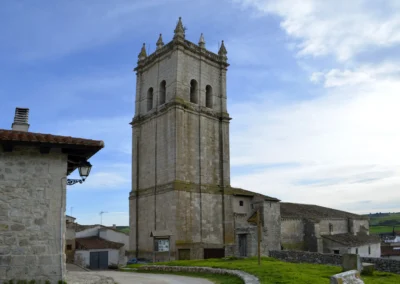Baltanás, Province of Palencia
The proposal from Baltanás was chosen by the competition jury for the comprehensive nature of its approach to the ensemble of the winery cellars and their environs, and for the inclusion of a building to be transformed in keeping with local building tradition. The jury also noted the project’s ability to become a model of good practice for other towns with similar dug-out complexes.
The proposal aims to equip the municipality with a multipurpose center with a cultural program linked to Baltanás’s dug-out heritage that will be able to promote related social activity and function as a visitor center for the cellar complex, known as “el Cotarro.” Refurbishment is also proposed for the approaches, tracks, and paths on the south side, in contact with the village center. These measures are intended to foster integration of the urban fabric and to enhance the perception of the municipality’s heritage and tourism value.
The place
Baltanás is a municipality in the district of Cerrato in the province of Palencia (Castilla y León). With an area of 158.85 km2, it includes the village of Valdecañas de Cerrato, annexed in 1974. It has a population of 1191 according to the 2019 census.
Over its history Baltanás has played a major role in the region and it is currently the economic and administrative center of the Cerrato district. Its economy relies largely on crop and livestock farming and tourism, which has gained traction thanks to the village’s considerable historical and cultural appeal.
The Baltanás cellar ensemble, listed as a cultural interest site (BIC), attracts a large yearly number of visitors interested in the area’s architectural and wine-related heritage. The cellars are a living example of the regional winemaking tradition as well as an invaluable legacy of vernacular architecture.
Gallery of images
Intervention Proposal
Refurbishment of the Urban Interface of the Baltanás Ensemble of Winery Cellars
The proposal aims to promote the regeneration of the south side of the Baltanás cellar complex, supporting the efforts already being made along these lines.
The work would include providing the municipality of Baltanás with a multipurpose center serving as a cultural venue, with a specific program linked to the dug-out heritage of its cellar ensemble. In particular, an intervention is envisaged for an empty plot together with one of the old winepress buildings, currently ruined, at the southern edge of the Cotarro complex. The idea is to transform and extend the existing building for the aforesaid program. It has two floors and direct access from the public thoroughfare. The project should be in keeping with the principles of local tradition as regards the materials and building techniques used.
Moreover, it is proposed that work be done on the roads, tracks, and paths linking the south side to the Cotarro hill with the village so as to improve its accessibility and the visitor experience. These measures should help create pleasanter and more usable public spaces, facilitate access to the cellar ensemble, harmonize the pavings, railings, steps, and retaining walls, and generally better integrate this area into the village, for it is currently dilapidated and underused. The upgrading of these routes is also intended to encourage heritage tourism and enhance the appeal of the Cotarro complex.
The holistic approach for the proposed work aims not just to make this site more functional but also to allow the project to be a model of good practice that may serve as a benchmark for communities in similar situations. The project is envisaged with criteria of sustainability and respect for the environment, especially as regards the use of the materials and techniques of local construction tradition, and is to serve as an example replicable in other municipalities with similar dug-out structures, fostering tourist and cultural development that contributes to the preservation and promotion of local heritage. The aim is thus that Baltanás may become a reference at national level for the management and promotion of such dug-out ensembles.











